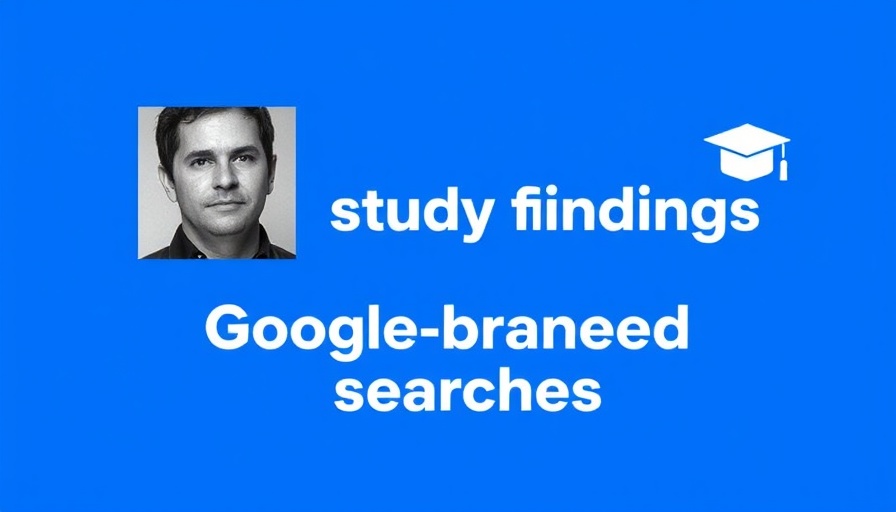
Understanding Google's Latest Local Update and Its Impacts
The digital landscape for small business owners and marketers just underwent a significant transformation with Google's latest local update, prompting an urgent reevaluation of online strategies. As of early January 2025, industry conversations have swirled around what has been dubbed the 'diversity update' by SEO experts like Joy Hawkins. What this entails is a serious reconsideration of ranking dynamics, particularly for businesses that already have a presence in the local packs. Essentially, if your website's URL appears in both the local pack and core organic results, Google may drop it from the latter, potentially reducing visibility and traffic.
Why This Update Matters for Small Businesses
For small business owners, particularly those heavily relying on both local and organic searches to drive traffic, this change is more than just an algorithm tweak; it’s an evolution in how visibility is granted on the world's largest search engine. Previously, dominating both rankings could sharpen a business's competitive edge, but now, Google’s new logic suggests it wants to prevent repetition of the same URL in both spaces. This strategy may serve to enhance diversity in search results, but it inherently challenges conventional wisdom in SEO practices.
Unpacking The Impact of Google’s 'Diversity Update'
In statistically significant changes observed, some businesses have noted substantial declines in their traffic. For instance, one home service company reportedly lost 242 clicks just from the influence of local pack rankings on their overall organic visibility. Hawkins points out that this update likely started as early as last August—highlighting that many businesses might experience continued repercussions well into 2025 if their strategies do not evolve accordingly.
How to Adapt to the New Normal
It’s essential for businesses to reassess their Google Business Profile links. Previously, the prevailing strategy recommended linking to the page with the most robust organic rankings. However, this approach could now backfire as the new update operates on the premise that Google prefers to limit exposure to repeated URLs. Instead, Hawkins suggests changing the link to a different, yet relevant, page to help mitigate ranking drops. This means a complete revamp of how local SEO strategies are built.
The Future of Local SEO: Anticipating Trends
Looking into the future, it is pertinent for small businesses and agencies to consider multiple angles when developing their SEO approaches. The reliance on both local and organic visibility necessitates a multi-faceted strategy that anticipates changes. As digital behavior evolves, so too should the tactics used to engage customers effectively. The adoption of AI tools in SEO could represent a pivotal step towards amplifying efficiency.
Crafting a Responsive SEO Strategy
Understanding the implications of Google's local update is about more than just reactive adjustments. Now more than ever, businesses must develop proactive strategies that leverage both AI capabilities and human-driven creativity. These could include optimizing multiple landing pages tailored to specific local keywords or niches, ensuring that business profiles are consistently monitored and updated, and exploring broader content strategies that engage users beyond mere visibility.
Final Thoughts and Next Steps
As the digital marketing landscape continues to shift under the pressure of new algorithms, small business owners and marketers must stay informed and adaptive. Whether it’s by engaging in targeted webinars or peer discussions, broadening knowledge surrounding these updates is imperative. A simple review of the impact this latest change has on your business strategy can provide avenues to reclaim visibility lost—understanding this update isn’t merely about overcoming an obstacle, it’s about positioning oneself for future success.
For those interested in further insights and actionable strategies, consider reaching out for a comprehensive SEO audit tailored to navigate these changes effectively. Success in today’s online landscape is defined by adaptability and foresight.
 Add Row
Add Row  Add
Add 




 Add Row
Add Row  Add
Add 

Write A Comment